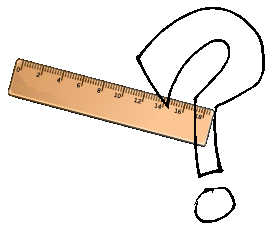Copyright © University of Cambridge. All rights reserved.
'Big and Small Numbers in Biology' printed from https://nrich.maths.org/
Show menu
Biology makes good use of numbers both small and large. Try these questions involvin g big and small numbers.
g big and small numbers.
You might need to use standard biological data not given in the question.
Of course, as these questions involve estimation there are no definitive 'correct' answers. Just try to make your answers to each part as accurate as seems appropriate in the context of the question.
- Estimate how many of the smallest viruses would fit inside the largest bacterium. What assumptions do you make in the calculation?
- Why might it be misleading to say that the size of a bacterium is 200 microns? How might you provide a more accurate description of the size?
- It has been said that 1g of fertile soil may contain as many as 2500 million bacteria. Do you think that this is a high density of bacteria? Estimate the percentage, by weight, of the soil that comprises bacteria. If the bacteria were evenly spread out, estimate the distance between the bacteria and compare this to the size of the bacteria. Does this surprise you?
- The shape of the earth may be approximated closely by a sphere of radius 6 x10$^{6}$m. In June 2008, its human population, according to the US census bureau , was thought to be 6,673,031,923. If everyone spread out evenly on the surface of the earth, what area of the planet would they each have?
- Humans typically live on land. Readjust your answer to the previous question making use of the fact that about 70% of the surface of the earth is water.
- Compare the previous three parts of the question. Are humans more densely packed than the bacteria in the soil? (given that humans live on the surface of the earth and bacteria live inside a volume of soil, you might want to consider how best to measure the 'density')
- Suppose that fertile land on earth extends, on average, down to about 10cm. Estimate how many cubic mm of fertile soil the earth contains. Estimate the number of bacteria living in the fertile land on earth.
- Question the assumption concerning the average depth of fertile land in the previous question. Would you say that it should be smaller, larger or is about right? You might want to use these suggested data (from here ) that the percentages of earth's land surface can be divided into different types: 20% snow covered, 20%
mountains, 20% dry/desert, 30% good land that can be farmed, 10% land with no topsoil. What other data might you need to make a more accurate assessment?
- There are about 300000 platelets in a cubic mm of human blood. How many platelets might you expect to find in a healthy adult male?
- There are about 4 - 6 million erythrocytes and 1000 - 4500 lymphocytes in a cubic mm of blood. A sample of blood on a slide is 2 microns thick. Would you expect many erythrocytes or lymphocytes to overlap on the microscope image?
Extension: In mathematics, a bound for a measurement gives two numbers between which we know for certain that the real measurement must lie. For example, a (not very good) bound on the height of the members of a class would be 1m < heights < 2m. In the previous questions can you find bounds on the quantities? First suggest a really rough bound which you would know to be true and then see if you can sensibly improve on it.